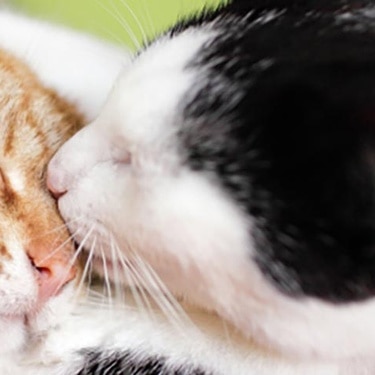
-
Find the right food for your petTake this quiz to see which food may be the best for your furry friend.Find the right food for your petTake this quiz to see which food may be the best for your furry friend.Health CategoryFeatured products
 Adult 7+ Healthy Cuisine Roasted Chicken, Carrots & Spinach Stew Dog Food
Adult 7+ Healthy Cuisine Roasted Chicken, Carrots & Spinach Stew Dog FoodDelicious roasted chicken paired with tender vegetables in a succulent stew
Shop Now Adult Salmon & Brown Rice Recipe Dog Food
Adult Salmon & Brown Rice Recipe Dog FoodSupports lean muscle and beautiful coat for adult dogs
Shop Now Perfect Weight & Joint Support Large Breed Chicken & Brown Rice Recipe Dog Food
Perfect Weight & Joint Support Large Breed Chicken & Brown Rice Recipe Dog FoodThis weight management and mobility support dog food was created with Hill’s unique understanding of the biology of overweight dogs
Shop NowFeatured products Adult Urinary Hairball Control Tender Chicken Dinner Cat Food
Adult Urinary Hairball Control Tender Chicken Dinner Cat FoodPrecisely balanced nutrition to support urinary health from kidney to bladder. With natural fibre technology to help reduce hairballs.
Shop Now Adult Perfect Weight with Chicken Cat Food
Adult Perfect Weight with Chicken Cat FoodBreakthrough nutrition for your cat’s healthy weight maintenance and long-lasting weight support
Shop Now Adult Salmon & Brown Rice Recipe Cat Food
Adult Salmon & Brown Rice Recipe Cat FoodSupports lean muscle and beautiful fur for adult cats
Shop Now -
DogCat
- Cat Tips & Articles
-
Health Category
- Weight
- Skin & Food Sensitivities
- Urinary
- Digestive
- Kidney
- Dental
- Serious Illness
-
Life Stage
- Kitten Nutrition
- Adult Nutrition
Featured articles Pet Food Storage Tips
Pet Food Storage TipsWhere you store your cat and dog food can make a big difference in the quality and freshness once it is opened. Here are some common questions and recommendations for optimal storage for all of Hill’s dry and canned cat and dog food.
Read More The Right Diet For Your Pet
The Right Diet For Your PetLearn what to look for in healthy pet food & nutrition, including ingredients, quality of the manufacturer, your pet's age, and any special needs they have.
Read More Water
WaterWater is the most important nutrient of all and essential for life. Animals can lose almost all their fat and half their protein and still survive, but if they lose 15% of their water, it will mean death.
Read More -


Digestive problems in cats are relatively common and many pet parents think they are normal. But if your cat vomits regularly or has loose stool, then there is something going on under the hood. It might be time to change their food or environment, and it's definitely time to talk to your veterinarian. Here are some tips for solving the most common cat digestive problems.

1. Intestinal Worms
Internal parasites are a common problem in cats — even indoor cats. The most challenging aspect of diagnosing and treating them is that a cat could be infested and never show any signs. The most common intestinal parasites in cats include hookworms, roundworms and tapeworms.
The signs of an intestinal parasite invading the cat digestive system can include:
- Vomiting
- Diarrhoea
- Worms in fecal matter or vomit
- Weight loss
- Pot belly
Intestinal worms in cats are not only gross but some can be contagious to humans, which is why it is important to have your cat's poop tested by your vet once or twice a year. Follow all deworming instructions from your vet if your kitty tests positive.
2. Constipation
Constipation is another common woe for the cat digestive system. Constipation can be caused by dehydration, pain, motility (muscle movement) problems in the colon or a rare condition called megacolon stemming from cats that "hold it" for too long or by chronic constipation or obstipation.
Recurring constipation, however, is no laughing matter. Your vet's solutions might include increasing your pet's water intake by supplementing a dry food with canned food, recommending more exercise or getting her to safely lose weight. Your vet might also recommend switching to a cat food that is formulated to help cats with digestive problems. If your cat is ever crouching miserably in the litter box to no avail, get them evaluated by a vet as soon as possible.


Tasty Tips
3. Hairballs
Hairballs are extremely common, but that doesn't mean your cat has to live with them. Hairballs are formed when a cat swallows loose hair while grooming. This hair normally passes through the cat’s digestive tract and is excreted when your cat has a bowel movement in the litter box. If that hair remains in the stomach, it can bunch together forming a hairball. If your cat vomits up the occasional hairball (no more than once a month is considered normal), then you don't necessarily need to call your vet.
For cats who need a food change to control hairballs, Hill's offers a wide variety of hairball control cat foods that can help. It has fiber levels specifically designed to help reduce hairball formation in the stomach, and it is calorie controlled, which is excellent since in my clinical experience most indoor cats struggle with excessive weight. If the hairball problem continues, consider having your cat professionally groomed (ask for a lion cut) or see your vet.

4. Inflammatory Bowel Disease and Chronic Enteropathy
When a cat has problems such as vomiting, Diarrhoea and loss of appetite for 3 or more weeks, they may have a chronic enteropathy. This term covers a number of different conditions including Inflammatory bowel disease (IBD). The exact cause of IBD is not known, but it is thought to to occur due a combination of a genetic predisposition and abnormalities in the communication between the immune system, the environment and the gut microbiome.
IBD can be a frustrating disease for your veterinarian to diagnose because it can mimic other gastrointestinal disorders and bloodwork and ultrasounds may not give a clear answer. Biopsy of the intestine is currently the best method to confirm the diagnosis. Management for cats with IBD generally includes steroids and a therapeutic food recommended by your veterinarian. If you cat has been diagnosed with IBD, it is important to carefully follow all of your veterinarian’s instructions to help your cat feel better.
5. Food Allergies
True food allergies are relatively rare in cats. When they occur, your cat may experience gastrointestinal signs (vomiting, Diarrhoea or gas), skin signs (itchy skin, red patches and hair loss), or both. The most common food allergies in cats include beef, dairy and fish, explains Tufts Cummings Veterinary Medical Center.
If your vet suspects that your cat has this condition, they will usually prescribe a 10-12 week food trial with a therapeutic food. During this period, you must ONLY feed your cat the recommended food to rule out ingredients they might be allergic to. If your cat eats anything else during this time, you have to start the food trial over. In a truly allergic patient, gastrointestinal signs should normally resolve in 2-3 weeks, and skin signs resolve in 8-12 weeks.
Don't panic if your cat develops a sudden digestive issue. Your veterinarian can help you identify the cause of the problem and come up with a plan to help your cat feel better.


Dr. Sarah Wooten graduated from UC Davis School of Veterinary Medicine in 2002. A member of the American Society of Veterinary Journalists, Dr. Wooten divides her professional time between small animal practice in Greeley, Colorado, public speaking on associate issues, leadership, and client communication, and writing. She enjoys camping with her family, skiing, SCUBA, and participating in triathlons.
Related products

Breakthrough nutrition for your cat’s healthy weight maintenance and long-lasting weight support

Supports lean muscle and beautiful fur for adult cats

Delicious turkey chunks in gravy with omega-3 fatty acids for eye health and brain development in kittens, and high-quality protein to support muscle growth. Balanced levels of minerals for strong bones and teeth.

Precisely balanced nutrition to support urinary health from kidney to bladder. With natural fibre technology to help reduce hairballs.
Related articles

Get helpful information on proper feline oral healthcare and why it's so vital to take care of your cat's teeth.

HillsPet Nutrition provides information on proper nutrition, fitness and special needs in keeping your cat healthy and happy.

As a responsible pet owner you owe it to yourself and your cat to understand problems associated with overweight cats.

Being overweight puts a cat at risk for developing many serious health issues. Weight gain indicates an increase in body fat and usually results when your cat eats too much and exercises too little.

Put your cat on a diet without them knowing
Our low calorie formula helps you control your cat's weight. It's packed with high-quality protein for building lean muscles, and made with purposeful ingredients for a flavorful, nutritious meal. Clinically proven antioxidants, Vitamin C+E, help promote a healthy immune system.
Put your cat on a diet without them knowing
Our low calorie formula helps you control your cat's weight. It's packed with high-quality protein for building lean muscles, and made with purposeful ingredients for a flavorful, nutritious meal. Clinically proven antioxidants, Vitamin C+E, help promote a healthy immune system.

